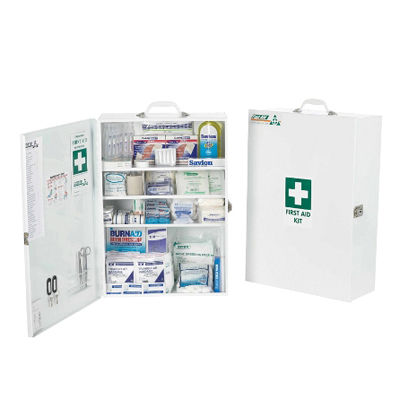The ABCDs of Influenza - What's The Difference?

Did you know that there are four different types of influenza viruses? Most people are only familiar with two – influenza A and B – but there are also C and D. These viruses are all similar in that they cause respiratory illness in humans, but there are some key differences between them.
For example, did you know that influenza C is relatively mild and only affects young children? On the other hand, influenza D is a virus that primarily affects cattle but can also infect humans.
Keep reading to learn more about the surprising differences between influenza A, B, C, and D!
Introduction
There are many different types of flu, each with its own set of symptoms and severity. The most common type of flu is the seasonal flu, which typically occurs in the fall and winter months. This type of flu is caused by the influenza virus, which is spread through contact with respiratory secretions, such as saliva, mucus, or blood. The flu can also be spread through contact with contaminated surfaces, such as door handles or doorknobs.
The four different types of influenza
There are four different types of influenza viruses: A, B, C and D. Each of these viruses can cause a different kind of influenza, with varying symptoms and severity.
Type A influenza is the most common and severe type of influenza. It is responsible for the majority of flu cases and can cause serious illness, especially in young children and the elderly.
Type B influenza is less common than type A and usually causes a milder form of the disease. However, type B can still be dangerous, particularly to infants and people with weakened immune systems.
Type C influenza is the least common type of influenza and typically causes a very mild form of the disease.
Type D influenza is a new type of virus that was only recently discovered. It is similar to type C and usually causes a mild form of the disease.
The surprising differences between A, B, C, and D
Different strains of the influenza virus are classified according to their surface proteins.
Group A viruses are the most common and cause the majority of influenza infections. They are divided into subtypes according to the two proteins on their surface, hemagglutinin (H) and neuraminidase (N). There are 18 different H subtypes and 11 different N subtypes.
Group B viruses are less common than group A, but they can still cause serious illnesses, especially in infants and young children. There are currently no subtypes of group B influenza viruses.
Group C viruses are very rare and usually only cause mild respiratory illnesses in children.
Group D viruses are even rarer than group C and have only been found in a few animals, such as pigs
The importance of getting vaccinated
Vaccination is the best way to protect against influenza, which is a serious and sometimes deadly disease. Every year, millions of people around the world get sick with influenza, and many people die from it. Getting vaccinated against influenza is especially important for people at high risk of serious influenza complications, such as pregnant women, young children, people with certain chronic medical conditions, and people 65 years and older.
The contagiousness of Influenza A or B
Influenza A and B are both highly contagious viruses that can cause severe respiratory illness in people of all ages. The viruses are spread through contact with respiratory secretions (such as saliva, mucus, or blood) from an infected person, usually through coughing or sneezing. They can also be spread through contact with contaminated surfaces, such as doorknobs, door handles, or countertops.
These viruses are most commonly spread during the winter months, when respiratory illnesses are more common. However, they can be spread year-round, and outbreaks can occur at any time.
The Rapid Testing for Influenza A and B
Rapid testing for influenza A and B is a new method of testing that is proving to be highly effective in detecting the presence of the virus. The test can be performed in a matter of minutes, and it is very accurate. This new type of testing is helping to improve the detection of influenza cases and to prevent the spread of the virus.
Rapid Antigen Tests are now available to be used to check for Covid and Influenza A or B.











